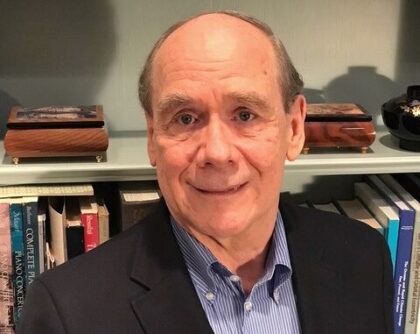Paul C. Joss
Research Interests
The focus of Prof. Joss’s research is the theory of neutron stars, supernovae, and binary systems. At present, he is investigating a promising new model for the origin of cosmic gamma-ray bursts, a mysterious phenomenon that has puzzled astrophysicists for the past thirty years. In this new model, two massive stars in a binary system merge to form a single, rapidly rotating star. The newly formed star later explodes to form an extraordinary type of supernova, which has been dubbed a “hypernova.” During the hypernova explosion, the core of the star collapses to form a central black hole, while the rapidly rotating matter just outside the core forms a massive torus surrounding the black hole. It then takes anywhere from a fraction of a second to a few minutes for the matter in the torus to fall into the black hole, releasing huge amounts of energy as it does so. This object can be called a microquasar, since it is a miniature version of the quasars that form in the nuclei of active galaxies. In both quasars and microquasars, the energy released by the infalling matter is emitted in beams that are directed along the rotation axis of the infalling matter. In the case of a microquasar produced in a hypernova event, we see a gamma-ray burst if one of these beams is directed toward the earth. In order to determine the viability of this model, Prof. Joss is presently carrying out the world’s first realistic calculations of the processes leading up to the formation of a microquasar, from the evolution of the original binary system to the hypernova explosion itself.
Biographical Sketch
Professor Joss joined the faculty in the MIT Department of Physics in 1973. He received his B.A. in Physics from Cornell University (1966) and his Ph.D. in Astronomy and Space Sciences from Cornell in 1971.
Awards & Honors
- 1980 // Helen B. Warner Prize for Astronomy, American Astronomical Society
- 1976 // Sloan Research Fellowship
Key Publications
-
“Limits on energy storage in the crusts of accreting neutron stars,” Mock PC, Joss PC, ASTROPHYSICAL JOURNAL 500 (1): 374-387 Part 1 JUN 10 1998.
-
“The nature and evolutionary history of GRO J1744-28,” Rappaport S, Joss PC, ASTROPHYSICAL JOURNAL 486 (1): 435-444 Part 1 SEP 1 1997.
-
“The relation between white-dwarf mass and orbital period in wide binary radio pulsars,” Rappaport S, Podsiadlowski P, Joss PC, DiStefano R, Han Z, MONTHLY NOTICES OF THE ROYAL ASTRONOMICAL SOCIETY 273 (3): 731-741 APR 1 1995.
